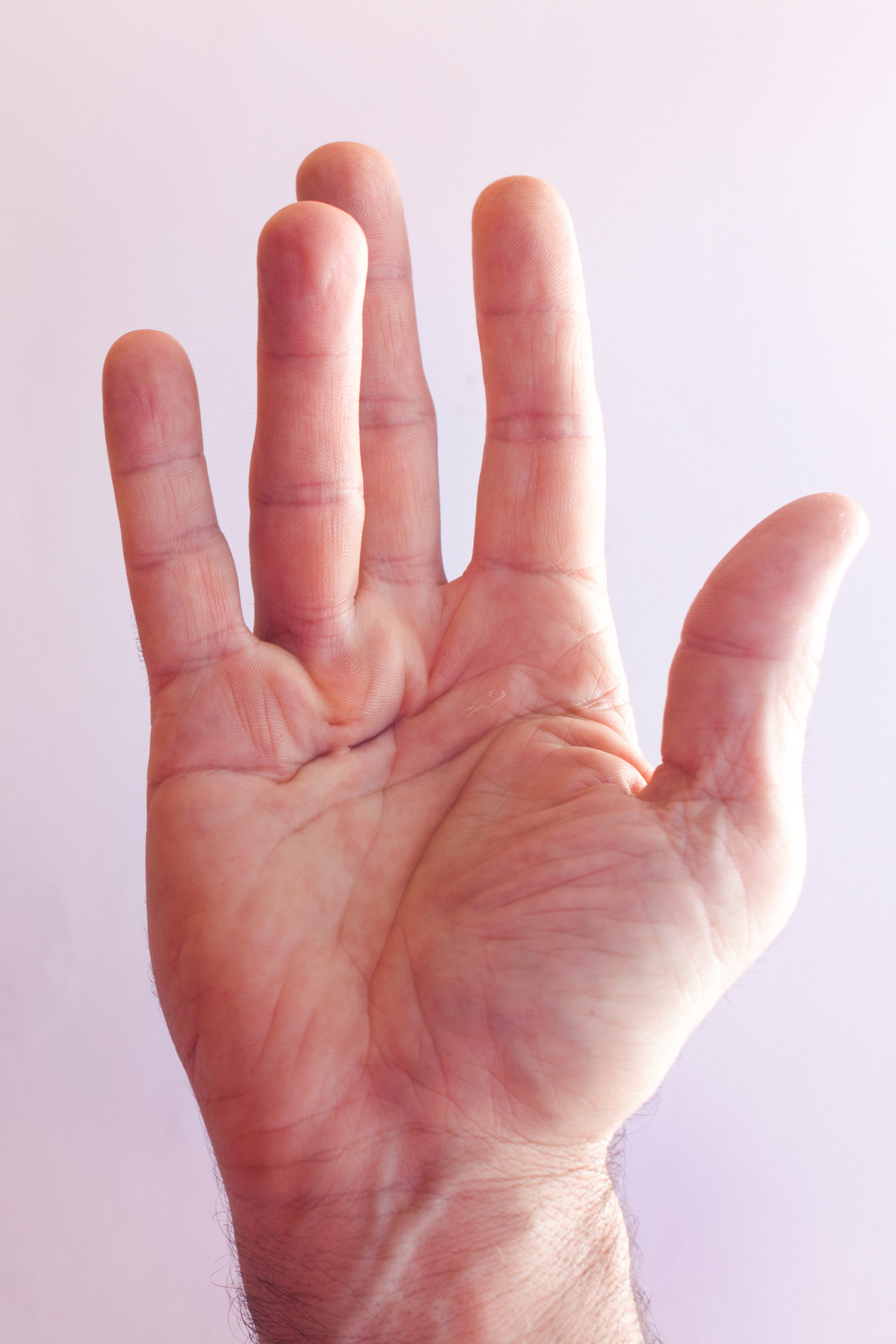Dupuytren’s Contracture

Dupuytren’s Contracture
What is it?
Dupuytren’s Disease is a painless condition that causes an abnormal thickening of the skin in the palm. Dupuytren’s Contracture starts as a nodule or bump and may progress to the formation of cords or bands that can limit the ability to straighten the fingers. It is more common in men, especially of Northern European background. It is unusual before the age of 40, but is most often severe if it starts at a younger age. Treatment is only necessary if the disease progresses to the point where the digits begin to contract.
What causes it?
The cause of Dupuytren’s is unknown. It can run in families, so it may be inherited or genetic. Abnormal proteins are thought to play some role in the progression of the disease as well. People often relate Dupuytren’s to an accident or injury, but there is no clear link between injury and Dupuytren’s Contracture.
How is it diagnosed?
A lump or pit in the palm is often the first symptom. The lump may be painful in the beginning. The usual location is at the base of the ring finger but may also involve any finger or the thumb. The cords grow into the finger causing them to bend, and prevent the finger from straightening. This may result in difficulty using the hand, especially with picking up change, wearing gloves, or putting your hand in your pocket.
The history of a progressive inability to fully straighten the fingers along with the thickening in the palm is characteristic of Dupuytren’s disease, and may require treatment. The presence of pain or numbness should prompt the consideration of other diagnoses seen with stiff fingers including arthritis, trigger finger, carpal tunnel, etc.
What are the Treatments for Dupuytren’s?
There is currently no medical treatment or “cure.” Dupuytren’s treatment is recommended when the inability to straighten the finger causes difficulty with function. Traditionally, Dupuytren’s treatment is surgery and involves removing some of the abnormal tissue, allowing the fingers to straighten. It is impossible to remove all of the diseased tissue. The disease may come back or extend beyond the original area even after surgery. Surgery may involve working on the joints in the fingers if the contracture has led to stiffness. Although usually effective, open Dupuytrens’ surgery can lead to a difficult recovery with joint stiffness, wound care, and need for hand therapy. It is, however, a necessary choice for certain cases of Dupuytren’s contracture.
There is a minimally-invasive alternative that is performed in the office. This is known as needle aponeurotomy (or percutaneous fasciotomy). With needle aponeurotomy, which uses local anesthesia, contracted fibers beneath the skin are cut with the tip of a small needle. The goal is to cut the ‘cord’ of abnormal tissue, resulting in straighter fingers without the ordeal of an open surgical procedure. There are many advantages to needle aponeurotomy. The time spent at the office is trivial compared with time spent in the operating room. A recent study has shown that needle aponeurotomy is an effective, long lasting, and safe Dupuytren’s contracture treatment. Like any procedure for Dupuytren’s, there is a chance of recurrence and need for further surgery. An additional advantage is that the cost of the procedure in the Florida Hand Center office is significantly less than when performed in the hospital. Recovery generally takes one week, and most activity can be resumed immediately after the procedure.
